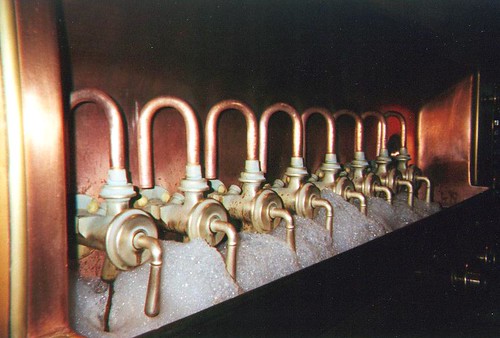In case you haven't heard the news, there were more breweries —'craft' breweries— in the United States, at the end of November, than there were a year ago.
Not such unexpected news, you say?
Well, make that more breweries than only a month ago, or even a week ago, or just yesterday. During the first eleven months of 2014, breweries were opening at a rate of ... 1.5 per day.
The Brewers Association (BA) —the advocacy group for 'small' and 'independent' breweries in the United States— has released its year-end short-form review for 2014. Some other salient data:
- There are now 3,200 active breweries in the country. (By the end of 2013, there were 2,722.)
- There are 13 states that each have more than 100 breweries apiece. 1
- Through June of 2014, 'craft' breweries enjoyed 18 percent growth by volume, and the assumption, based upon data, is that they will have enjoyed a similar rate during the second half of the year.
- IPA is the most popular 'craft' beer 'style.'
- Women now consume almost 32 percent of 'craft' beer volume.
There is no legal or federal-government requirement for a 'craft' brewery. However, the Brewers Association defines it —for the purpose of membership— as:
- Small
Annual production of 6 million barrels of beer or less (approximately 3 percent of U.S. annual sales). Beer production is attributed to the rules of alternating proprietorships. 2
- Independent
Less than 25 percent of the craft brewery is owned or controlled (or equivalent economic interest) by an alcoholic beverage industry member that is not itself a craft brewer.
- Traditional
A brewer that has a majority of its total beverage alcohol volume in beers whose flavor derives from traditional or innovative brewing ingredients and their fermentation. Flavored malt beverages (FMBs) are not considered beers.
-----more-----
- 1 My unofficial brewery total for the Washington, D.C., Maryland, and Virginia area combined, based on Twitter-use, is 115: 11, 42, and 62, respectively.
- 2 An 'alternating proprietorship' is an arrangement in which two or more brewing companies take turns using the physical premises of a brewery. Generally, the proprietor of an existing brewery, the 'host brewery,' agrees to rent space and equipment to a 'tenant brewery.'










No comments:
Post a Comment
Comment here ...